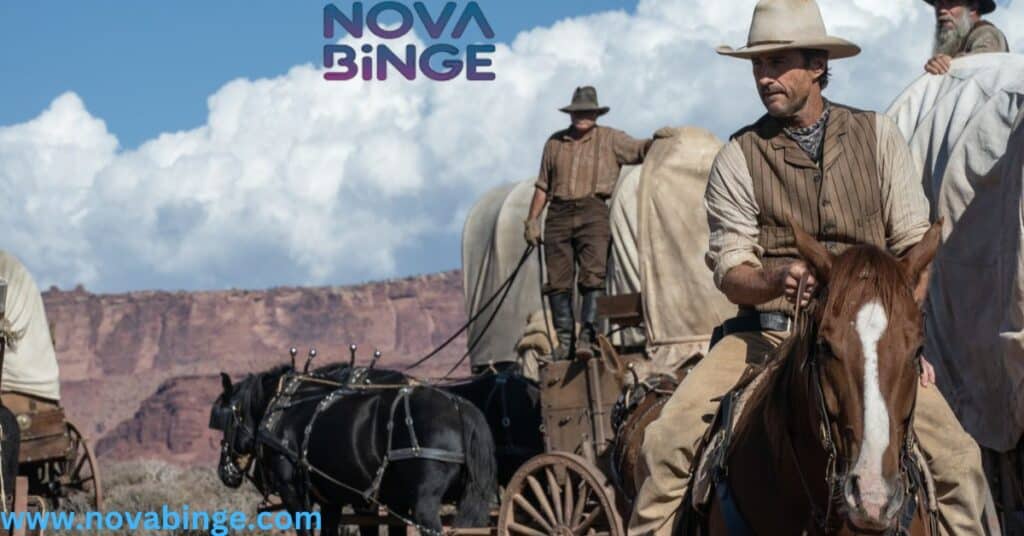In the heart of the American West, a new epic is unfolding. Kevin Costner’s ambitious Horizon: An American Saga continues its journey with Chapter 2, promising to transport viewers to the rugged and breathtaking landscapes that defined a nation.
As we eagerly await this sequel in the American Saga, let’s embark on a deep dive into the stunning film locations that will bring this Western film to life.
The Vision Behind the Locations
Kevin Costner, no stranger to the Western film genre, has always had a keen eye for capturing the essence of the American West. With Horizon: An American Saga, he’s taking his vision to new heights.
The choice of filming locations for Chapter 2 isn’t just about finding pretty backdrops; it’s about authenticity and storytelling.
“The landscape is a character in itself. It shapes our heroes, challenges them, and ultimately defines their journey.” – Kevin Costner
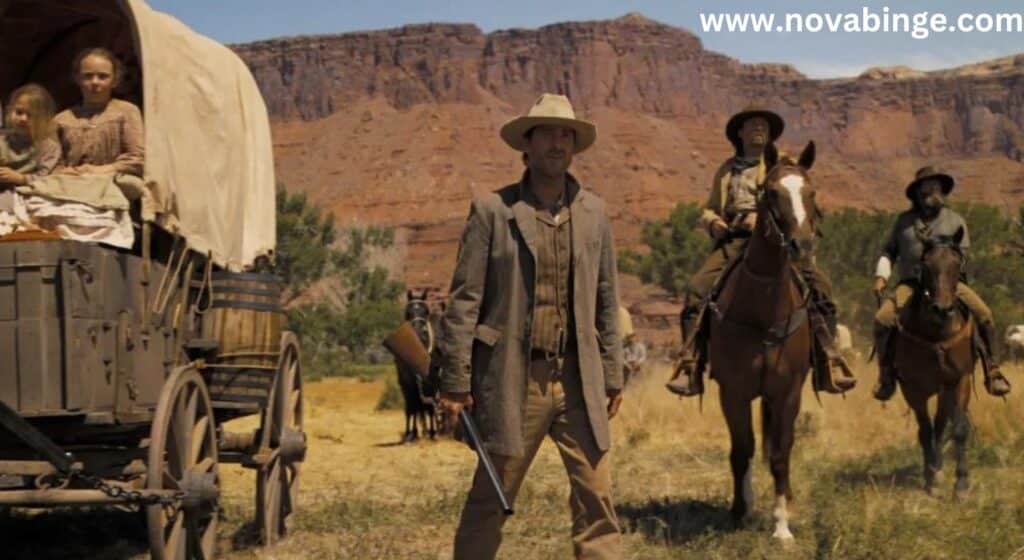
Costner’s commitment to authenticity means shooting in some of the most challenging terrains. This dedication brings its own set of hurdles:
- Extreme weather conditions
- Remote locations with limited access
- Preserving pristine environments
- Logistical challenges of moving equipment
But these challenges are precisely what make Horizon American Saga stand out. The raw, untamed beauty of these locations seeps into every frame, creating an immersive experience that transports viewers back to the 19th century frontier landscapes.
Read more about this: Resident Alien’s Stunning Filming Locations
Principal Photography: Where the Magic Begins
The cameras for Chapter 2 started rolling in early 2023, generating immediate buzz among film enthusiasts and Western aficionados alike. The cast and crew’s first impressions were nothing short of awe-inspiring:
- Sam Worthington: “It’s like stepping back in time. The landscapes are so vast and untouched, you can’t help but feel the weight of history.”
- Sienna Miller: “The natural light here is a cinematographer’s dream. Every shot looks like a painting.”
- Luke Wilson: “You don’t have to act much when you’re surrounded by this kind of beauty. The environment does half the work for you.”
St. George, Utah: Where the West Comes Alive
St. George, Utah, serves as one of the primary film locations for Horizon: An American Saga – Chapter 2. This area, known for its iconic red rock formations, provides the perfect backdrop for Costner’s epic Western.
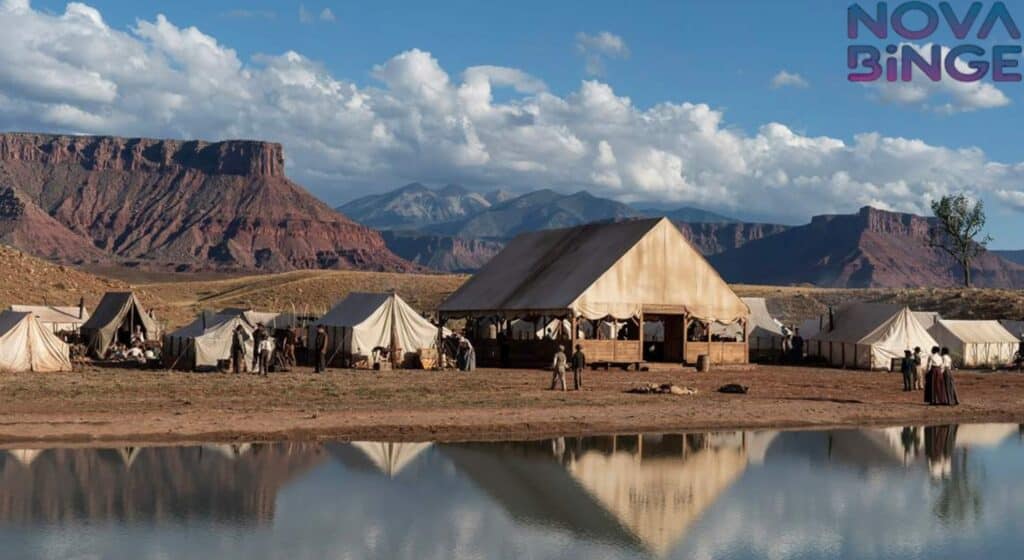
Key Shooting Sites in St. George:
- Snow Canyon State Park
- 7,400 acres of geological wonders
- Lava tubes and petrified sand dunes
- Used for scenes depicting treacherous frontier journeys
- Pioneer Park
- 52-acre natural park
- Distinctive red rock formations
- Perfect for showcasing the raw beauty of the Old West
The landscape of St. George doesn’t just provide a stunning visual; it shapes the narrative. The harsh, unforgiving terrain becomes a character in itself, challenging the protagonists and reflecting their internal struggles.
Moab: Utah’s Adventure Capital
Contrasting with St. George’s scenery, Moab offers a different flavor of the American West. This location choice showcases the diversity of landscapes that early settlers encountered.
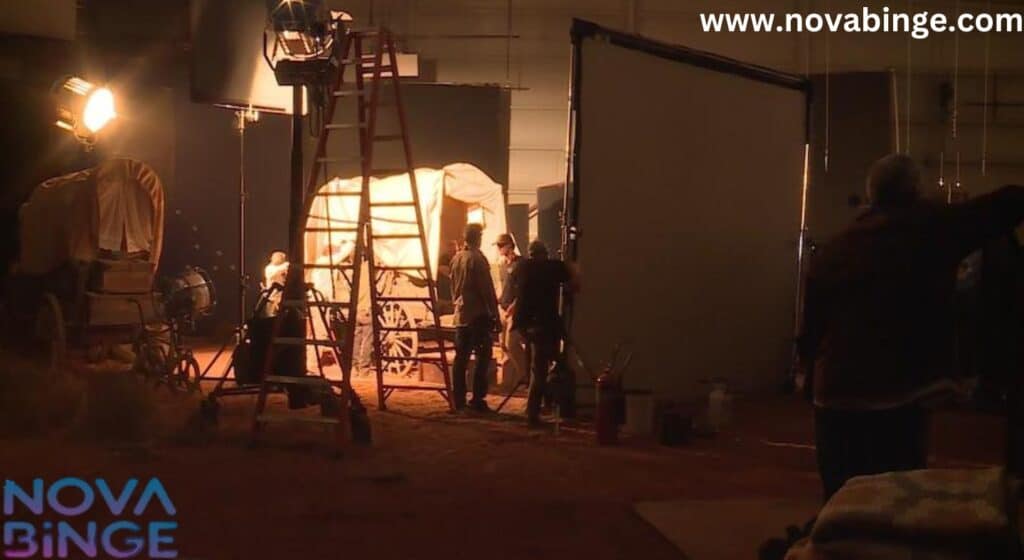
Moab’s Star Attractions:
- Arches National Park
- Over 2,000 natural stone arches
- Used for epic panoramic shots and dramatic confrontations
- Dead Horse Point State Park
- 5,362 acres of breathtaking views
- 2,000 ft. above the Colorado River
- Perfect for showcasing the vastness of the frontier
| Location | Key Features | Cinematic Use |
|---|---|---|
| Arches National Park | Natural stone arches | Epic vistas, character journeys |
| Dead Horse Point State Park | Colorado River overlook | Dramatic confrontations, reflective moments |
The production team faced unique challenges in Moab:
- Extreme temperature fluctuations
- Limited cell service for coordination
- Preserving delicate ecosystems during shoots
Beyond Utah: Expanding the Frontier
While Utah serves as the primary backdrop, rumors suggest that Horizon: An American Saga – Chapter 2 might venture beyond state lines. Potential locations include:
- The rolling prairies of South Dakota
- The rugged coastline of Oregon
- The towering peaks of Colorado’s Rocky Mountains
This diversity of landscapes isn’t just for show. It reflects the varied terrains that shaped the American experience during westward expansion.
Behind the Scenes: Crafting the Look
Creating an authentic Western film goes beyond choosing the right locations. It’s about bringing those locations to life on screen.
Set Design: Blending with Nature
The production design team, led by veteran Derek Hill, faced the challenge of creating sets that looked like they belonged in the 1800s while seamlessly blending with the natural environment.
- Use of locally sourced materials for authenticity
- Weathering techniques to age structures
- Removable sets to minimize environmental impact

Costume Choices: Reflecting the Environment
Costume designer Mary Zophres drew inspiration directly from the landscapes:
- Earth tones mirroring the red rocks and dusty plains
- Layered clothing reflecting the harsh climate
- Authentic period details down to the smallest button
Cinematography: Capturing the Vistas
Cinematographer Ben Richardson, known for his work on “Wind River” and “Yellowstone,” brings his expertise in capturing vast landscapes to Horizon American Saga.
- Use of wide-angle lenses to showcase the expanse
- Natural lighting to maintain authenticity
- Drone shots for breathtaking panoramas
Environmental Considerations
Filming in such pristine locations comes with a responsibility. The Horizon: An American Saga team took several steps to minimize their environmental impact:
- Partnering with local conservation groups
- Implementing a strict “Leave No Trace” policy
- Using eco-friendly alternatives for props and set materials
- Educating cast and crew on local ecosystems
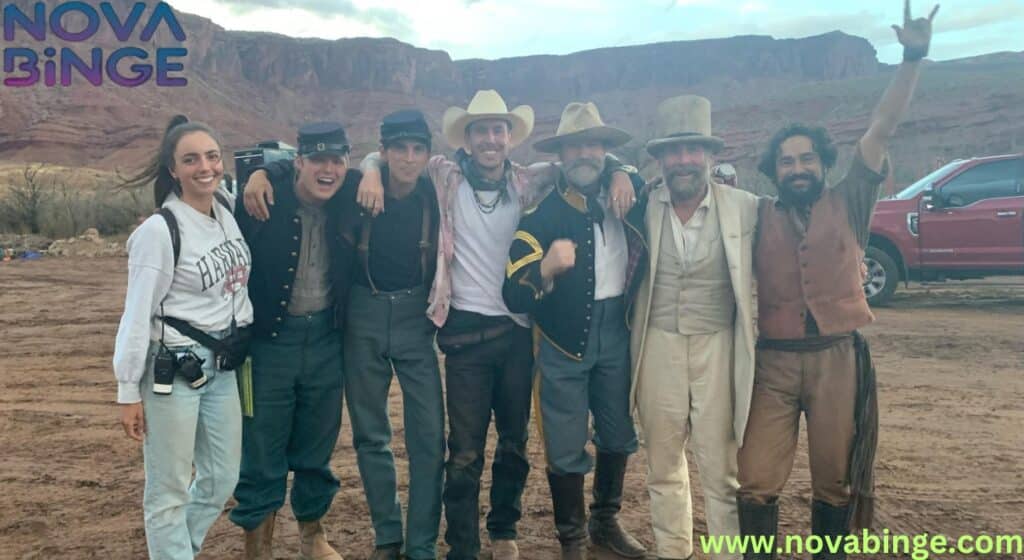
The Locals’ Perspective
The arrival of a major production like Horizon: An American Saga – Chapter 2 has a significant impact on local communities.
Economic Boost:
- Increased tourism interest
- Job opportunities for locals as extras and support staff
- Boost to local businesses during production
Community Involvement:
- Open casting calls for background actors
- Educational programs about film production for local schools
- Collaboration with Native American communities for authentic representation
From Location to Screen: Post-Production Magic
While the natural beauty of the film locations is undeniable, post-production plays a crucial role in bringing Horizon: An American Saga to life.
CGI vs. Practical Effects:
- Minimal CGI used, primarily for safety reasons or to remove modern elements
- Emphasis on practical effects to maintain authenticity
- CGI enhancements focus on expanding vistas or adding period-accurate details
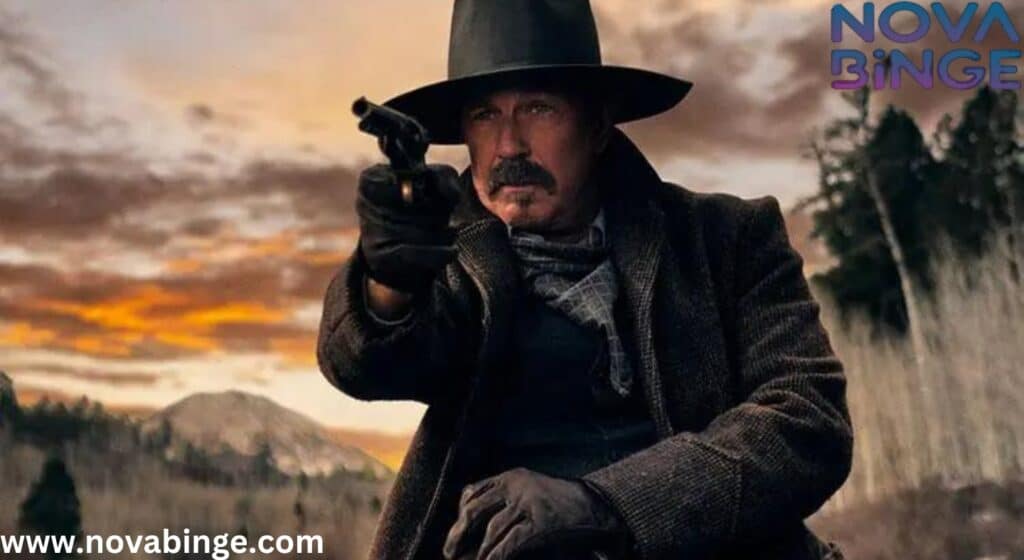
Color Grading:
- Enhancing the natural beauty without losing authenticity
- Creating a consistent look across varied locations
- Evoking the feel of classic Westerns while maintaining a modern edge
Trailer Breakdown: Spotting the Locations
The official trailer for Horizon: An American Saga – Chapter 2 offers tantalizing glimpses of these stunning locations. Here’s a breakdown of some key shots:
- 0:15 – A lone rider silhouetted against the Delicate Arch in Arches National Park
- 0:32 – A wagon train winding through the red rocks of Snow Canyon State Park
- 0:47 – A tense standoff at Dead Horse Point, with the Colorado River in the background
- 1:05 – A sweeping aerial shot of Pioneer Park, showcasing the vastness of the landscape
Hidden details viewers might have missed:
- Native American petroglyphs visible in background shots
- Authentic 19th-century survey markers in wilderness scenes
- Careful placement of native plant species in close-up shots
What’s Next?
As fans eagerly await Chapter 2, speculation is already building about what’s to come in the saga.
Potential Chapter 3 Locations:
- The Pacific Northwest, showcasing the end of the frontier
- The bustling streets of San Francisco, reflecting the growing urbanization
- The plains of Texas, exploring the cattle drive era
The impact of Horizon: An American Saga on Western film locations could be significant. Just as “Dances with Wolves” revitalized interest in the Badlands, this series could shine a spotlight on lesser-known gems of the American West.
FAQs
Q: When will Horizon: An American Saga – Chapter 2 be released?
A: While an exact date hasn’t been announced, industry insiders suggest a late 2024 release.
Q: Can tourists visit the filming locations?
A: Yes! Most locations, including Snow Canyon State Park and Arches National Park, are open to the public. However, some specific filming sites may be on private property.
Q: How does Chapter 2’s location choices differ from Chapter 1?
A: Chapter 2 focuses more on the red rock landscapes of Utah, while Chapter 1 featured more of the Great Plains and mountain regions.
Q: Will Kevin Costner appear in Chapter 2?
A: Yes, Costner not only directs but also stars in the saga, though details about his character remain under wraps.
Q: How long did filming for Chapter 2 take?
A: Principal photography lasted approximately 4 months, wrapping up in late 2023.
Conclusion: A Love Letter to the American West
Horizon: An American Saga – Chapter 2 is more than just a Western film; it’s a testament to the enduring allure of the American West. Through its carefully chosen film locations, it tells a story not just of characters, but of a land that shaped a nation.
As we await the release of this epic Western, we’re reminded of the power of cinema to transport us. Kevin Costner’s vision, combined with the raw beauty of these locations, promises to deliver a viewing experience that’s as vast and awe-inspiring as the frontier itself.
Whether you’re a fan of Western films, a history buff, or simply someone who appreciates stunning cinematography, Horizon: An American Saga – Chapter 2 is shaping up to be a must-see event. It’s not just a movie; it’s an invitation to explore the landscapes that defined America’s past and continue to captivate us today.

David Lee is a seasoned writer specializing in filming locations. With a keen eye for detail and a passion for cinema, David explores the stories behind iconic sites and shares unique insights that bring your favorite films and series to life.

